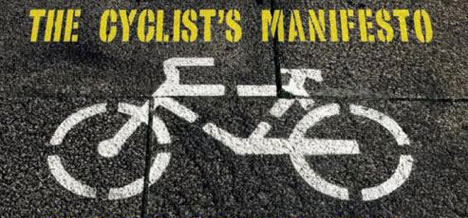Context-
Cycling in India transcends the realm of mere transportation; it embodies a significant facet of social justice with transformative potential for people's lives. While the discourse on cycling in the West often revolves around decarbonizing transport, in India, it assumes a broader significance deeply intertwined with social equity and mobility access.
Data on Cycling Ownership and Use:
The ownership and utilization of bicycles in India present a compelling narrative of resilience amidst the surge of car-centric infrastructure and motor vehicle ownership. National Family Health Surveys data indicates a marginal increase in cycle ownership nationally, from 48% to 55% over two decades.
States like Madhya Pradesh, Rajasthan, Uttar Pradesh, and West Bengal witnessed phenomenal growth in cycle ownership, with increases ranging from 30% to over 75%.
In contrast, car ownership remains significantly lower, Population-weighted average car ownership across the four states remained low at 5.4% in 2021,
underscoring the prevalence and relevance of cycling in the Indian context.
Additionally, the data indicates a nuanced regional variation in cycling trends, with some states experiencing exponential growth in cycle ownership over the past two decades. Cycling to school increased nationally from 6.6% in 2007 to 11.2% in 2017, with rural areas showing nearly a doubling of levels and urban areas remaining stable.
States implementing Bicycle Distribution Schemes (BDS) saw significant increases in cycling to school, e.g., Bihar saw quadrupling from 3.6% to 14.2% after BDS implementation in 2006.
Moreover, the data reveals a notable shift in cycling patterns, particularly in rural areas, where cycling emerges as a predominant mode of transportation for commuting to schools and workplaces. This shift underscores the intrinsic link between cycling and socio-economic factors, with bicycles serving as a cost-effective and accessible means of mobility for millions of Indians, especially in rural and semi-urban regions.
Social Outcomes:
Access to bicycles bears profound socio-economic implications, especially for marginalized communities. Initiatives like BDS in Bihar have not only facilitated increased school attendance among girls but have also contributed to their academic progression. Similarly, in Bengaluru, providing bicycles to low-income women has not only improved their commute but also enhanced their economic productivity by enabling easier access to work.
Furthermore, the social outcomes of cycling extend beyond education and employment, encompassing broader dimensions of health and well-being. Studies have shown that regular cycling can lead to significant improvements in physical fitness and mental well-being, thereby contributing to a healthier and more active population. By promoting cycling as a viable mode of transport, policymakers can address multifaceted challenges related to public health, environmental sustainability, and social equity.
Additionally, the success stories of BDS initiatives underscore the transformative potential of targeted interventions in addressing systemic barriers to mobility and access. By prioritizing initiatives that promote cycling among marginalized communities, policymakers can foster greater inclusivity and empowerment, ultimately paving the way for more equitable and resilient societies.
Cyclists and Urban Challenges:
Despite the growing enthusiasm for cycling, urban areas present formidable challenges in terms of infrastructure and safety. The lack of dedicated cycling lanes and the prevalence of hazardous road conditions pose significant risks to cyclists. A cyclist is estimated to be 40 times more likely to be involved in a traffic fatality than a car occupant in urban areas.
The disparity in fatality rates between cyclists and car occupants underscores the urgent need for comprehensive measures to enhance cycling safety.
Investments in dedicated cycling infrastructure, including cycle tracks, secure parking facilities, and repair shops, are imperative to promote cycling as a viable mode of urban transport. Moreover, integrating cycling-friendly policies into urban planning frameworks is essential to create safer and more inclusive urban environments.
Furthermore, addressing the cultural and behavioral barriers to cycling is crucial for promoting its uptake in urban areas. Public awareness campaigns and education initiatives can help dispel misconceptions about cycling and cultivate a culture of respect and mutual coexistence among road users. By fostering a more conducive environment for cycling, cities can unlock the full potential of cycling as a sustainable and efficient mode of urban transportation.
A Call to Action:
In the upcoming parliamentary elections, political parties have a unique opportunity to prioritize cycling by integrating it into their manifestos. Recognizing cycling as a matter of social justice and transformation, political leaders must commit to robust policy measures aimed at promoting cycling infrastructure, expanding bicycle distribution schemes, and enhancing road safety for cyclists.
Conclusion:
The resurgence of cycling in India reflects not only a mode of transport but a catalyst for social change and equitable development. By prioritizing cycling in policy agendas and investing in cycling-friendly infrastructure, India can harness the full potential of cycling to foster inclusive growth, mitigate environmental challenges, and promote healthier and more sustainable communities.
As we embark on the journey towards a more cycling-friendly future, let us collectively advocate for the rights and interests of cyclists, ensuring that cycling remains accessible to all, regardless of socio-economic status or geographic location. Together, let us embrace the cyclists' manifesto as a blueprint for building a more equitable and sustainable future for generations to come.
|
Probable Questions for UPSC Main Exam- 1. Explain the significance of cycling in India, highlighting its broader implications beyond transportation. How does this differ from the discourse on cycling in the Western context? ( 10 Marks, 150 Words) 2. Discuss the socio-economic impact of bicycle distribution schemes (BDS) in India, using examples from Bihar and Bengaluru. How do these initiatives contribute to addressing systemic barriers to mobility and access, particularly among marginalized communities? ( 15 Marks, 250 Words) |
Source- The Hindu







